I visited the Kelsey Museum collection in the spring of 2016, went home and worked out the pattern for this hat, and then came back in the summer of 2017. At the occasion of my second visit, I took a photo of my replica beside the original. Actually I took two photos. In one of them, my replica is inside-out. If anyone is interested, my SprangLady website contains three tutorials that take you step-by-step, showing you how to do this twining technique on a background of interlinking. And I do still have the specific pattern for this bonnet.
0 Comments
In the Fall of 2013, I visited the Krefeld Textile Museum, at the invitation of the director, Dr Annette Schieck. I viewed their collection of sprang bonnets, and then went home to try to write up the patterns and make replicas. I now return to verify details that I failed to note on my last visit. At the CIETA conference last month in St Petersburg, I met Aachen textile conservator Monica Vroon. She had a question about a certain set of 'dresses' for a statue at the Aachen cathedral. She met me in Krefeld, bringing the garments in question. It is a set of two garments. They are for a statue of the Virgin holding the Child Jesus ... so two 'dresses', one for mother, and one for the child. Looking closely at the pieces, yes, this certainly could be sprang. The next day I travelled to Herne, to visit with Torsten Verhülsdonk of VS-Books. We are talking about a German edition of Sprang Unsprung. Mr Verhülsdonk treated me to a tour of a very lovely archaeology museum in Herne. I then went on to Munich, where I taught a one-day sprang class, organized by Gitti ... it was a pleasure to meet you and your friends. (Sorry that I did not think to take photos.) Looking forward to seeing all the lovely sprang things you will make in the future.
A while back I met a curator from the British Museum, who invited me to have a look at the sprang textiles in their collection. I took her up on the offer. So, here I am in London, at the British Museum. They've reserved a spot for me in a 'study room' and bring my sprang bonnets to examine. I've been writing out the patterns ... and I've informed the curator of my plans to publish these lace patterns. Hoping to add them to my book of sprang lace. The historic record is so incredibly rich.
En route to the British Museum, I stopped off to visit a friend who lives near Sheffield. I met Andy and Elaine a few years back. Elaine really wanted to know more about sprang. They were, at that time preparing to participate in an event, re-doing the battle of Marathon in Greece ... he was going to be one of the bad guys. I made him a pair of leggings, appropriate to the time period, and based on research by Dagmar Drinkler. It seems that Andy has worn these leggings to several events. Imagine my surprise when I read on the internet that sprang is not at all suitable for leggings! Andy showed me a post indicating that, with one broken thread, the pants will fall apart. This, I thought, is the perfect moment for a bit of testing, some experimental archaeological if you will. Andy allowed me to cut a thread in his leggings. To make it a fair test, I cut a thread at the knee, a place that would be affected by movement of the leg. Andy took a picture of me cutting the thread just in front of his left knee. Here you see the broken thread at the left knee. Andy then went outside to do some work in the yard. He cleared his deck of the leaves, and tended to his leaf-blowing machine. His leggings stayed on the entire time ... no falling apart ... no falling off. Indeed no increase in the size of the hole. The wool threads stayed put. Wool has a certain 'grabbiness' to it's surface, and the wool sock-yarn that I had used to make the leggings is no exception. Yes, I've seen silk sashes in museum collections with long vertical slits, where a thread broke. The slipperiness of silk as well as the simple interlinking structure would allow a slit to develop ... but the slit will only open up so far. At some point the length of the cut threads will, itself, prevent further un-doing. The structure of the zig-zag pattern in these leggings also helps prevent un-doing. I repaired the damage I had caused, tied a knot to mend the cut ends, and tucked the knot to the inside of the leggings. The damage is now repaired, the knot almost imperceptible.
A big Thank You to Andy Cropper for permitting me to carry out this test. The organizers of the Intermountain Weavers Conference asked me back for this year. I taught three classes: intro to sprang, sprang lace and sprang in S&Z. The students were eager and enthusiastic. The world has a few more practitioners of sprang! Then on to the DC area, to be specific, George Washington’s Mount Vernon. I’ll gave a talk on the subject of sprang. I also handed over another replica of the Braddock sash. This time the beneficiary was Carlyle House. They will soon unveil a mannequin dressed out as Edward Braddock in his military uniform. Then on to Ann Arbor, Michigan, and the Kelsey Museum of Archaeology. They have a collection of some 200 pieces of sprang bonnets, some complete, some just little bits. Researcher Julia Galliker and I had a look at these pieces. We’re intending to compile our findings into a database (Julia has a gift for databases) and we will present this information at the Textiles of the Nile Valley Conference in Antwerp, Belgium, at the end of October.
Here I am, on a 3-city teaching tour of Colorado. Spring weather is living up to it’s reputation, sunshine, rain, snow, sleet, and then sun again. I am teaching classes in Montrose, Boulder, and Colorado Springs. Everyone works on her own frame, creating several sample pieces. In the introductory class, we explore the basic interlinking stitch, and then some variations. You learn the basic stitch, some finishing techniques, and then how to start from ‘scratch’.
My hostesses to date have been lovely. Many thanks to Bobbie, Mary, Janet, Sue, and Cheryl. I’ve been treated to a tour of Black Canyon of the Gunnison Park, and a drive through the Rockies, from Montrose to Boulder. Looking forward to a tour of the Schacht Loom factory. In-between teaching, I’ve kept myself busy working on some Coptic designs, working out the pattern, and then testing them by making sample pieces. A few years back I used some of my single spun wool to make a bonnet. The wool was quite dark in color, and does not photograph well. I’ve since made another bonnet, this time using some commercially spun linen. The pattern is based on a bonnet in the collection of the Danish National Museum in Copenhagen. The pale color in the linen makes it easier to see the stitches. It is really a few simple stitches, combined to make an interesting pattern and a lovely bonnet.
Now, examining historic hair nets, some of them were made from tightly spun singles. I experimented with some tightly spun wool, not treating the overtwist, nor waiting for it to settle down. It worked just fine. The weaving was easier than I expected, not really hampered by the extra twist. The finished piece, well, yes, I soaked it and blocked it twice, but it looks just fine. Some of the things I’ve completed recently an oblique-weave sash And a silk military sash And a better version of that Egyptian turban This replica turban is based on a visit with a mummy in the collection of the Guimet Museum in Lyon, France. The turban is interesting as it makes use of a common phenomena in sprang: one side is not the same length as the other side. Here this was done intentionally. The part around the head is 3/4 the size of the ‘tails’. That is to say, the tails were packed more loosely. Here’s how it went: Once blocked, the tails can be wrapped around the front of the head, transforming this into a turban.
Spring is slow in coming here in Winnipeg. Today was a balmy above freezing temperature, but back down to below freezing tonight. Meanwhile, I’m busy with my sprang. I’ve been busy making military sashes. I’m also working on another pair of sprang leggings. These were inspired by images of Persian warriors fighting the ancient Greeks. Indeed a friend of mine is a re-enactor, who plays ‘Hoplite’ and will be going to Marathon, Greece, to re-enact the battle that made famous the practice of 23 mile runs. Yes, sprang can be ‘shaped’ and there is fair evidence that ancient Persians used the sprang technique to create form fitting clothing such as leggings and shirts. Here is my current sprang piece, destined to be leggings. The zig-zag pattern is achieved by the use of twining within a background of interlinking. For more information on sprang twining, check out my youtube videos which give you basic instruction on twining.
Instructions for the ‘W’ pattern can be found in my book Sprang Unsprung. The past few months I’ve been busy working on a replica of that amazing shirt in the collection of the Arizona State Museum. http://www.statemuseum.arizona.edu/coll/photographic/tonto_shirt.shtml The idea began with a visit to the Arizona State Museum in April 2014, in the company of cotton spinning instructor Joan Ruane. Joan offered to hand spin the cotton, but then somehow it became the job of Louie Garcia, specialist in Pueblo textiles. Louie grew the cotton himself, hand ginned it, spun and plied the cotton. It was excellent material to work with. I made two ‘trial’ pieces before working the real replica. Mapping out the lace pattern was one thing, mapping the ‘irregularities’ was another. In the end, the irregularities held much information. Based on these, I’ve come to the conclusion that the original artisan did not have the benefit of graph paper or any such means to calculate out the pattern ahead of time. Quite the amazing feat.
|
Categories
All
Archives
May 2023
Categories
All
|
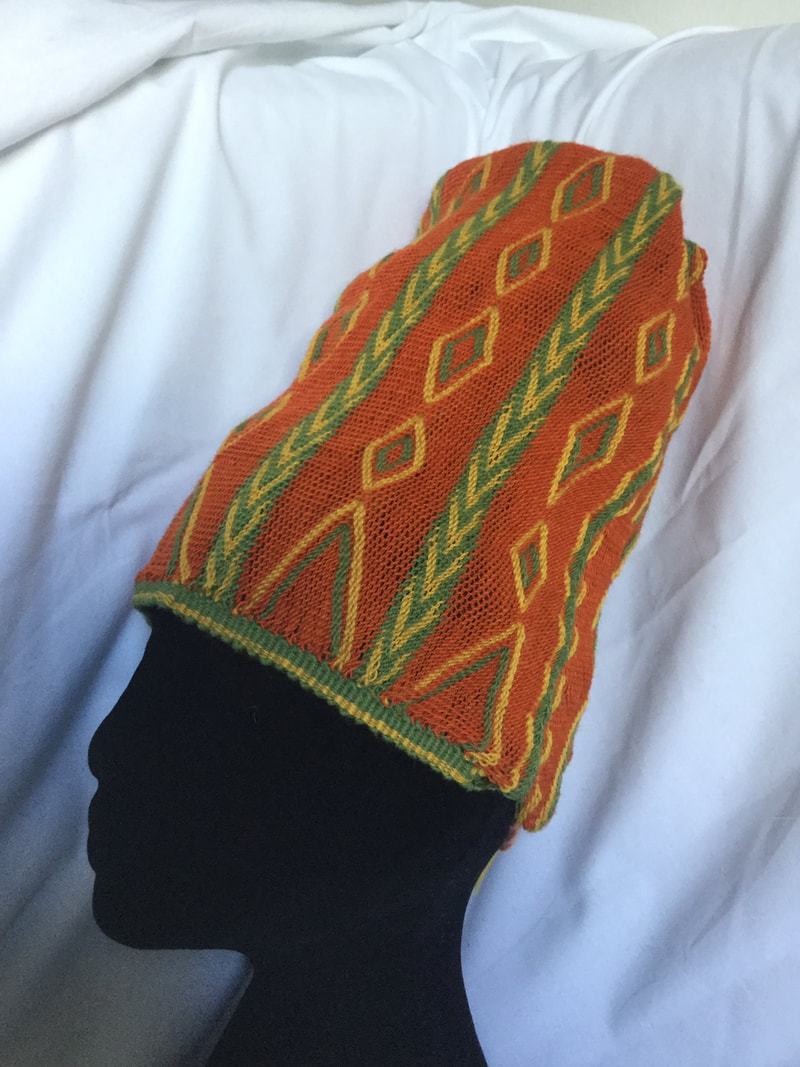
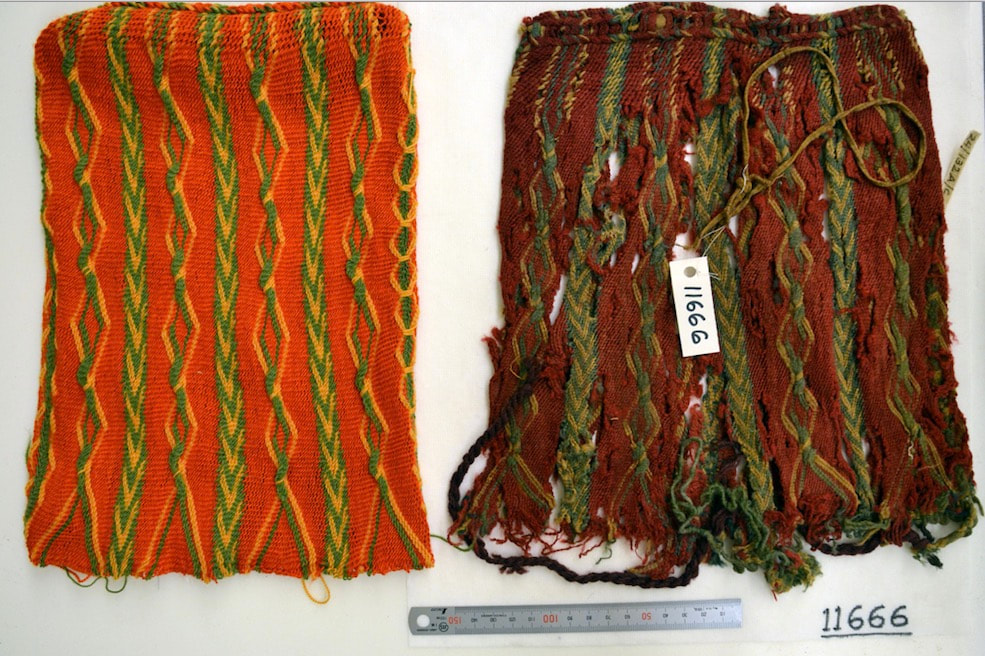
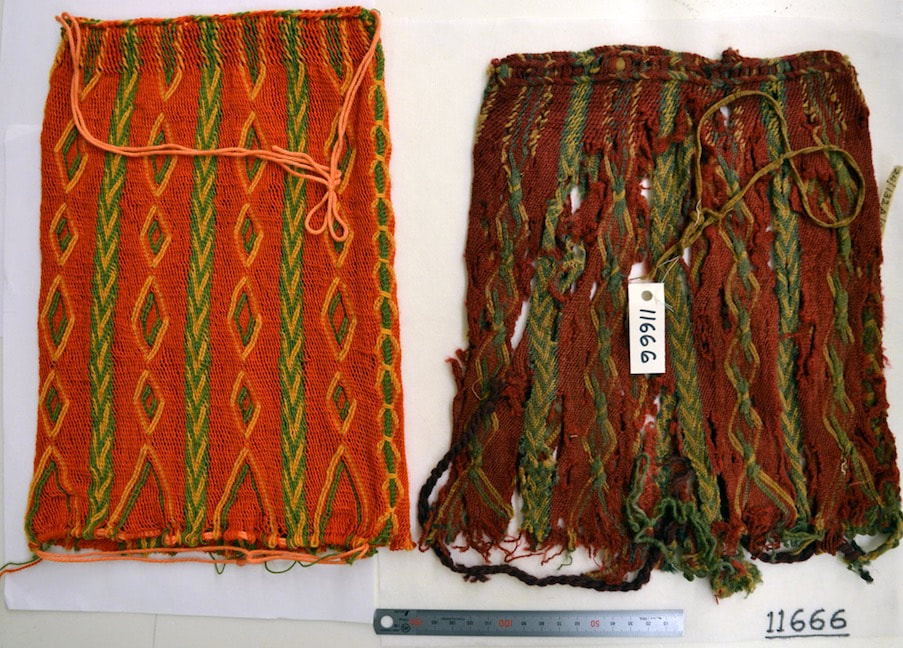
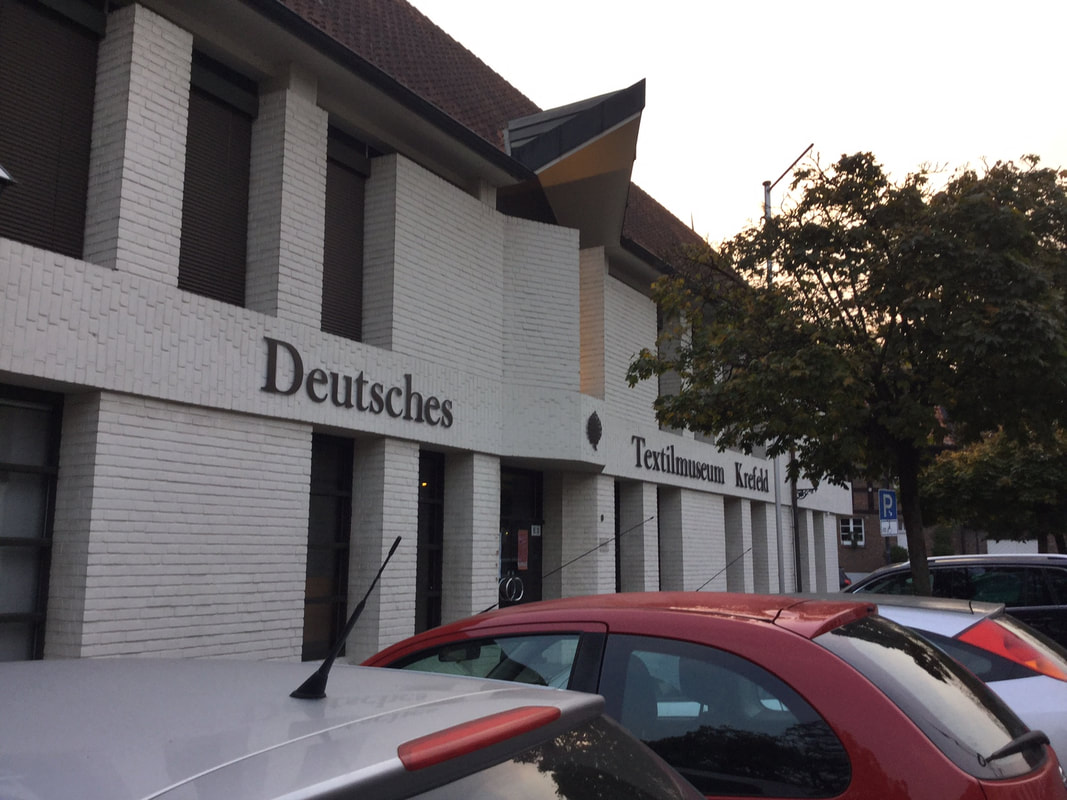
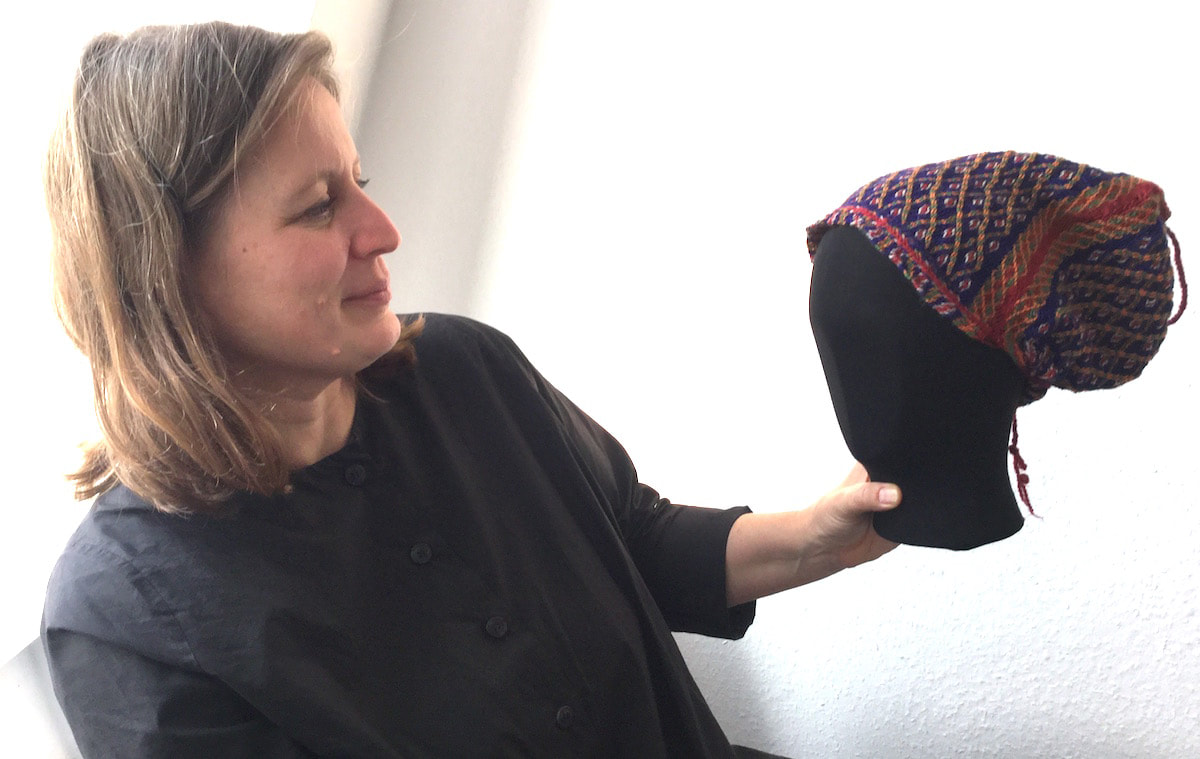
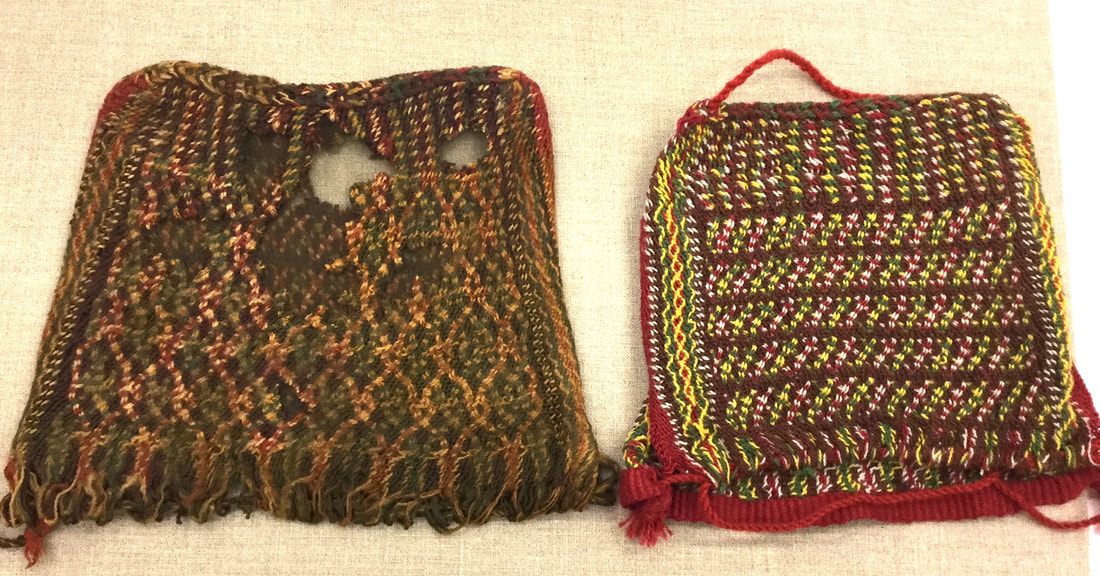
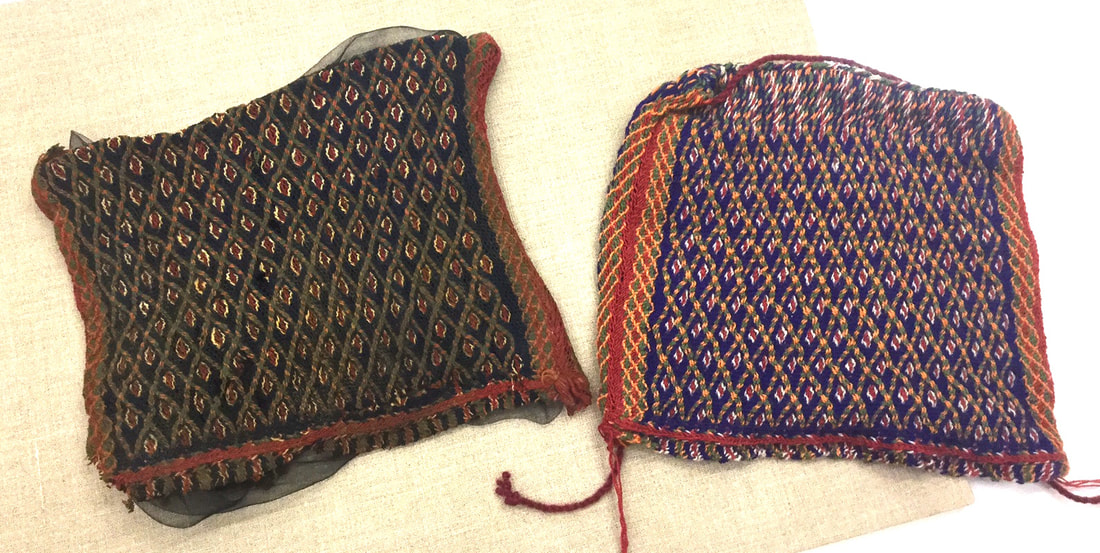
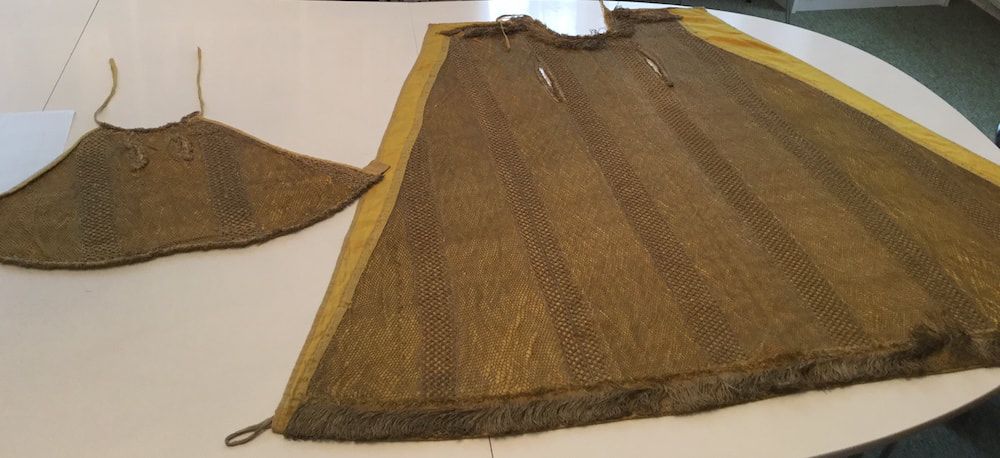
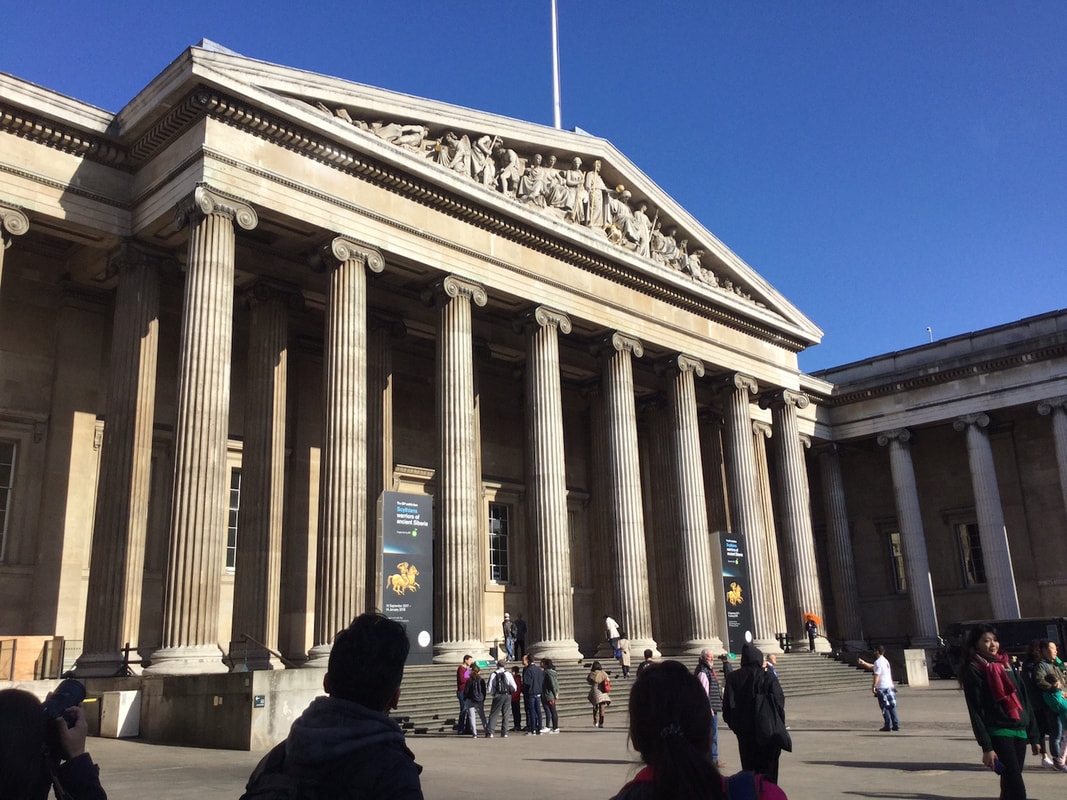

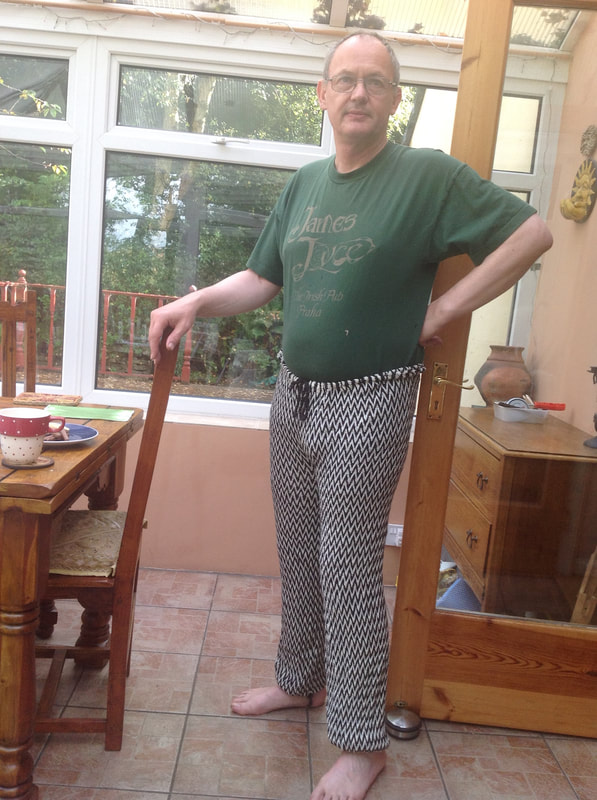
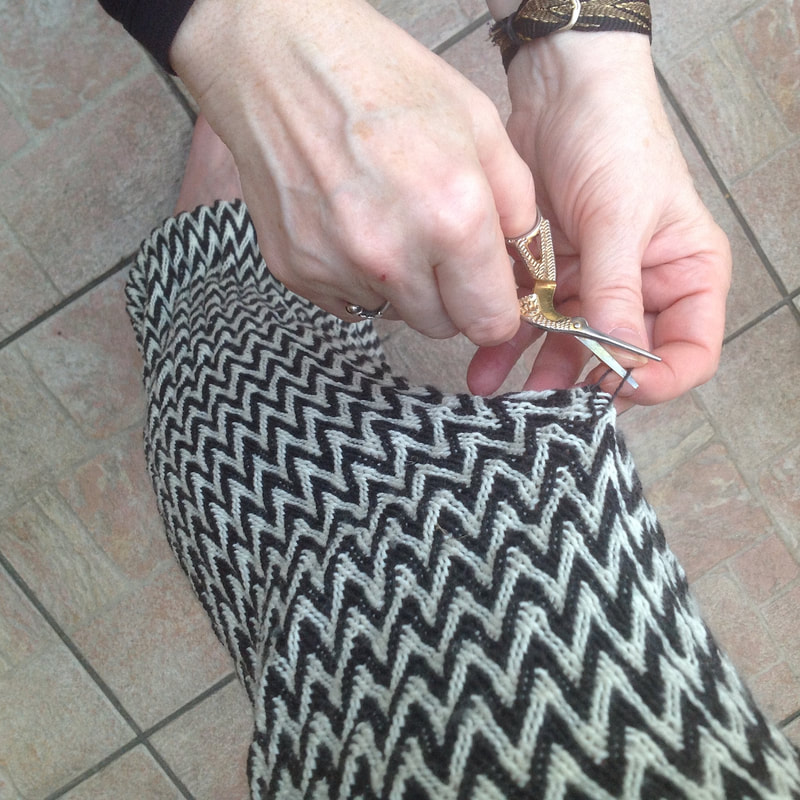
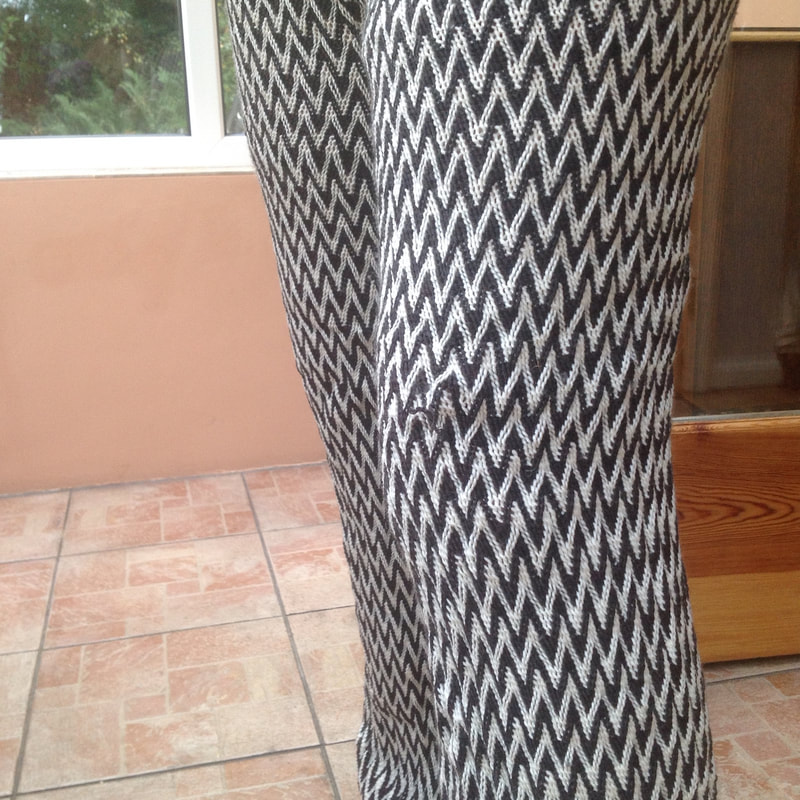
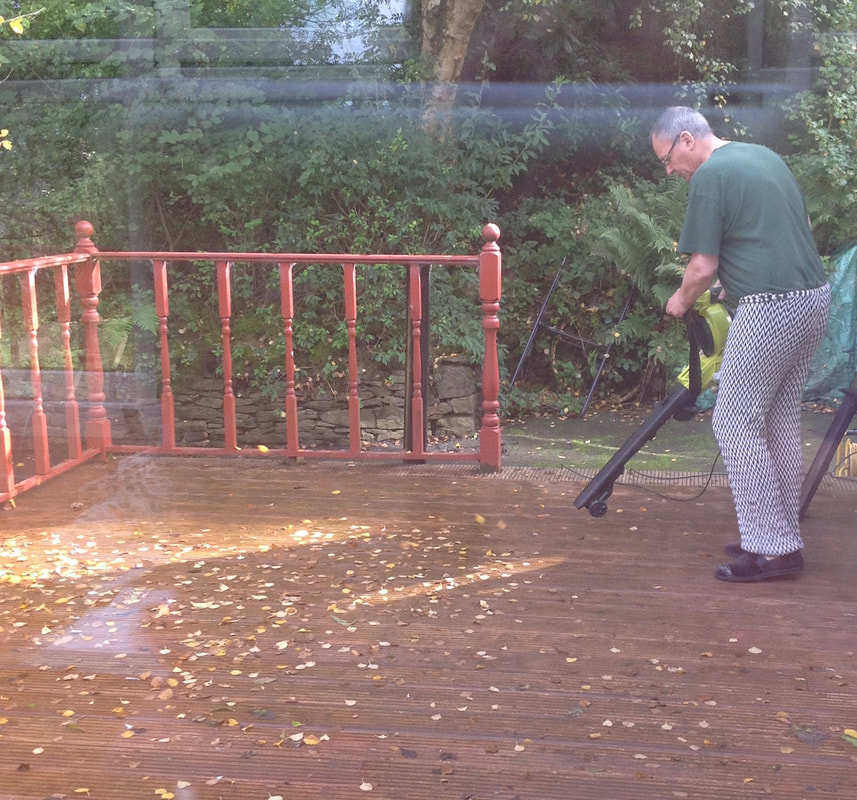
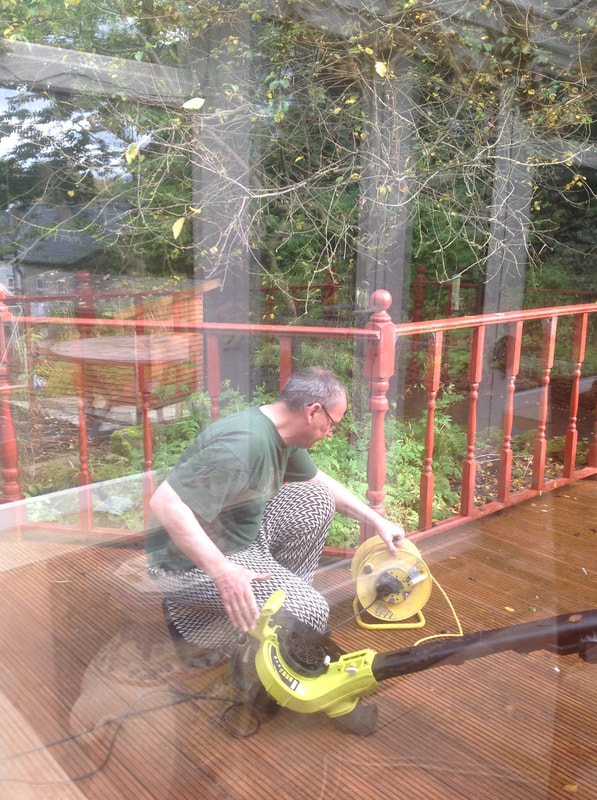
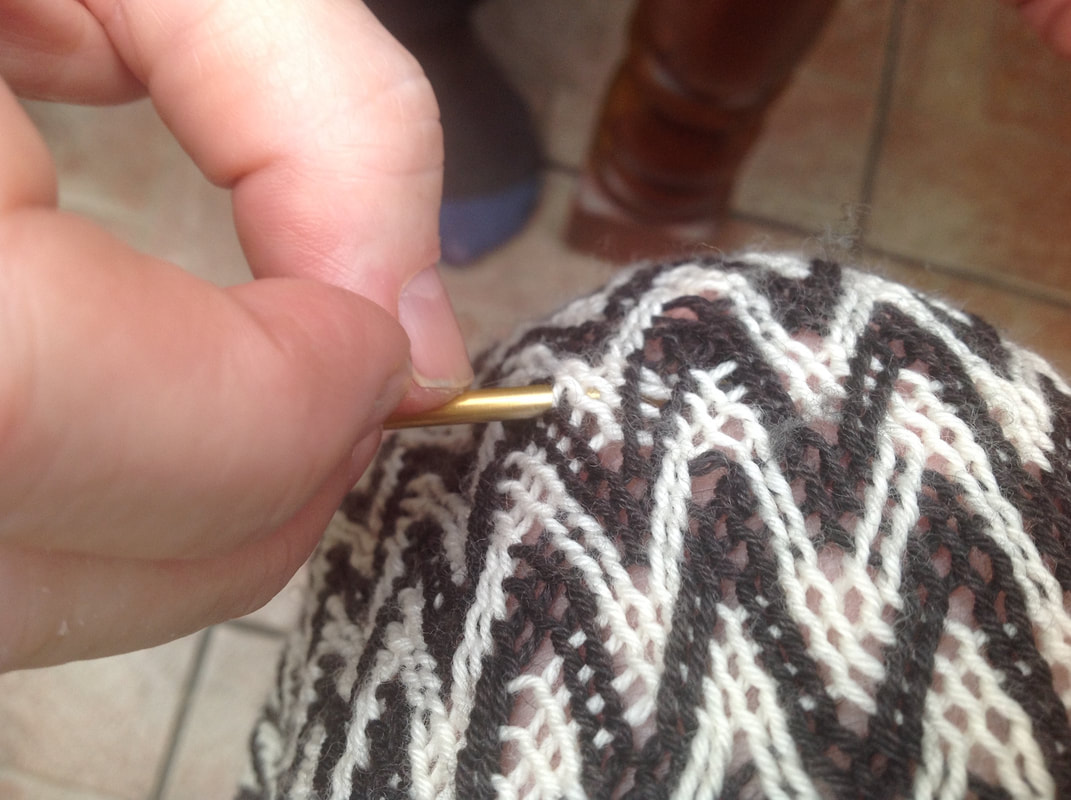
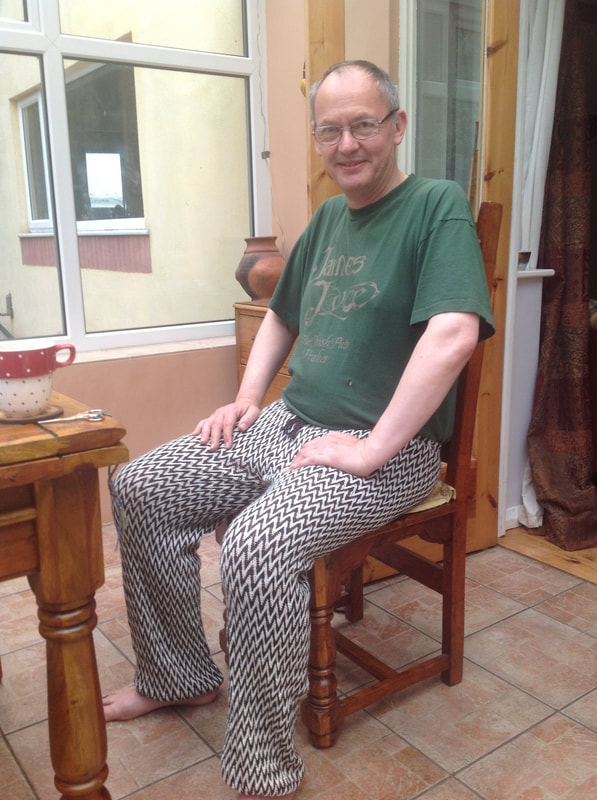
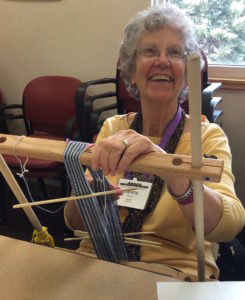
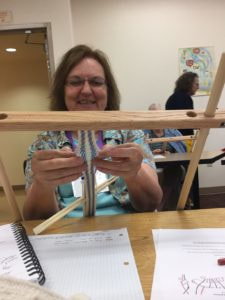
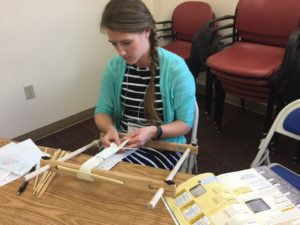
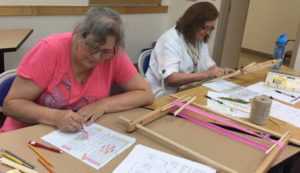
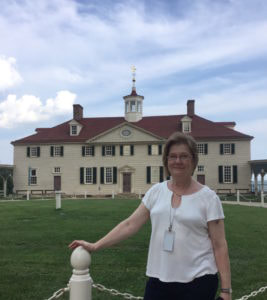
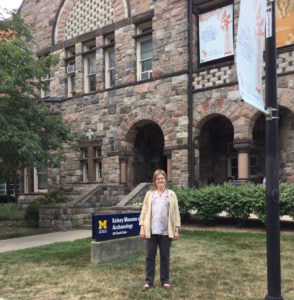
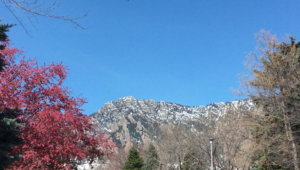
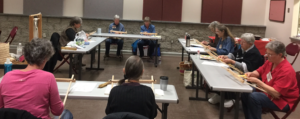
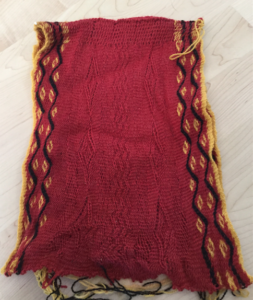
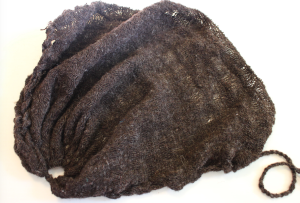
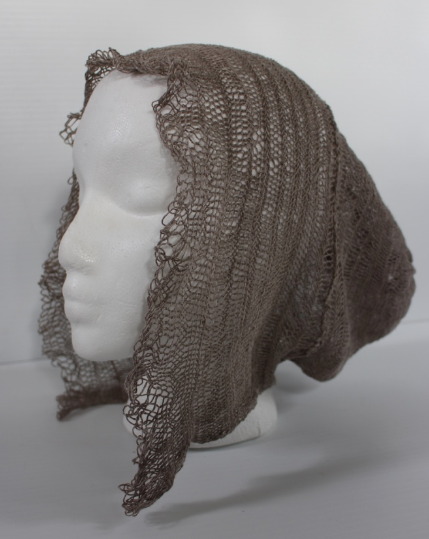
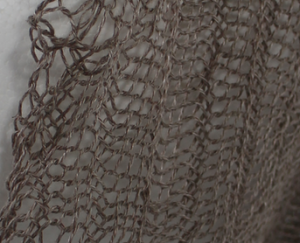

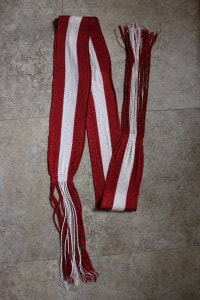
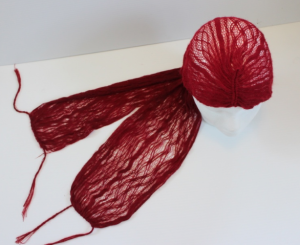
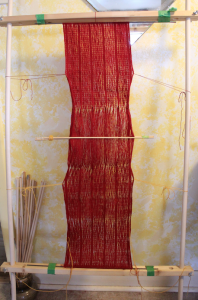
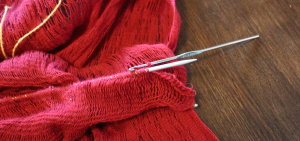
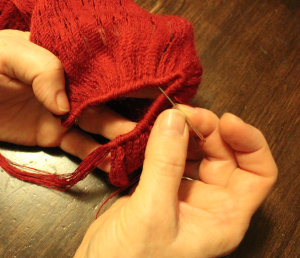
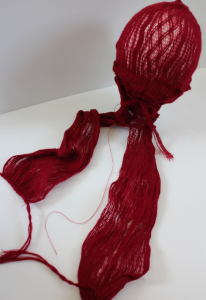
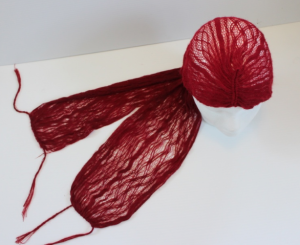
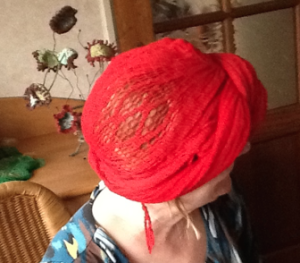
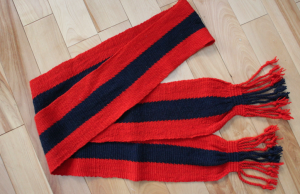
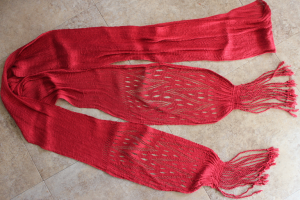
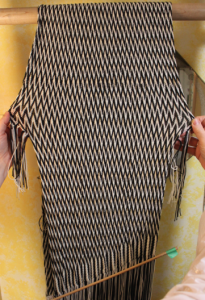
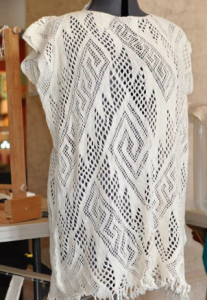
 RSS Feed
RSS Feed